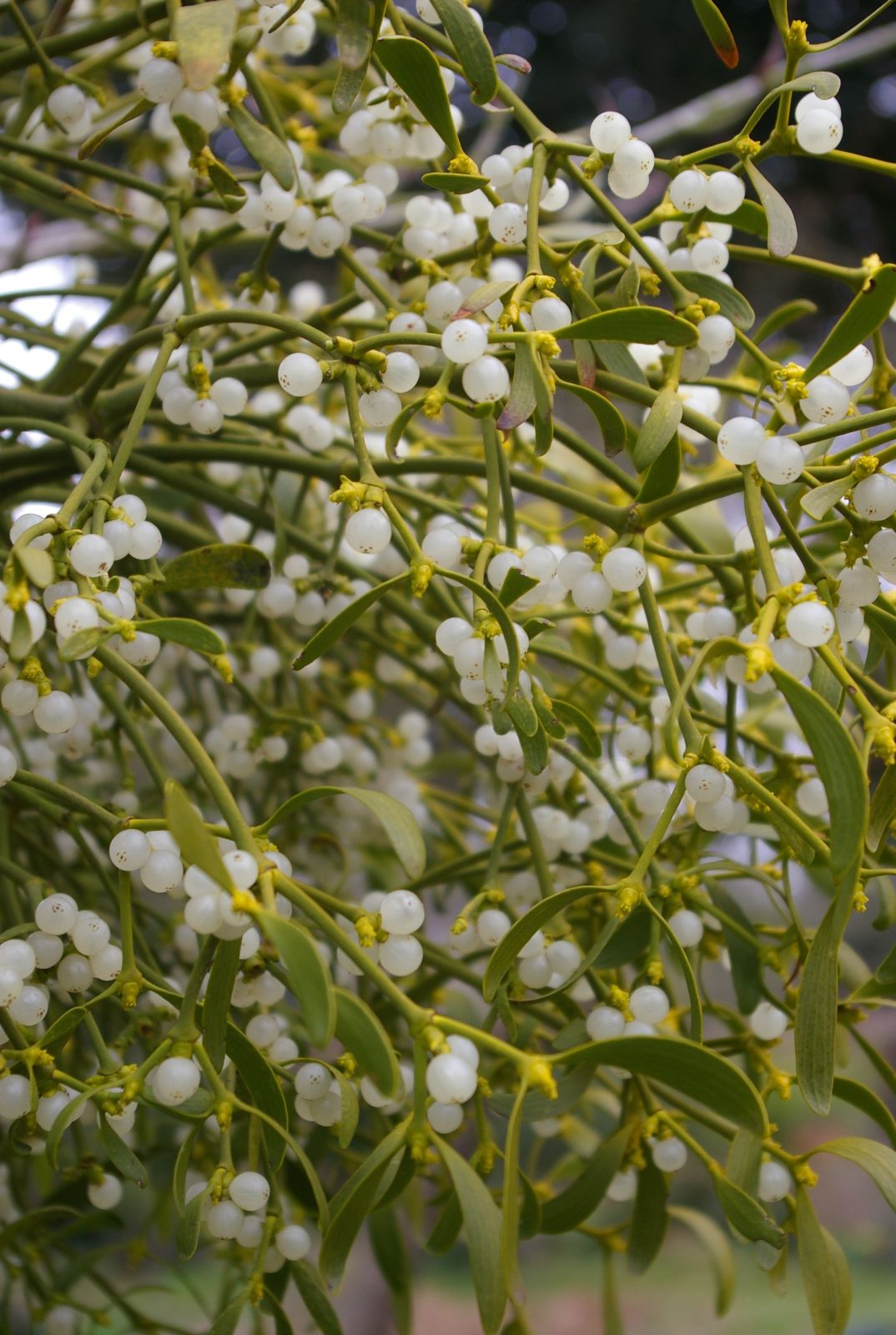Viscum
Credits
Article from Bean's Trees and Shrubs Hardy in the British Isles
Recommended citation
'Viscum' from the website Trees and Shrubs Online (treesandshrubsonline.
Family
- Loranthaceae
Common Names
- Mistletoe
A genus of about sixty-five species of hemiparasitic shrubs, mostly in the African tropics and subtropics, a few extending into Temperate Asia and Australia, only two into Europe. They draw most of their nourishment from the host plant by means of suckers (haustoria) inserted in its conductive tissues, but are not true parasites, the leaves being green and photosynthetic. Annual growths dichotomous, short, each with a pair of opposite, leathery, persistent, parallel-veined leaves. Flowers inconspicuous, cymose, unisexual. Perianth with two or four segments. Anthers sessile, adnate to the perianth segments and containing numerous pollensacs. Ovary inferior, with an almost sessile stigma. Fruit berry-like, containing one to three embryos embedded in the endosperm (neither ovules nor true seeds are developed in the Loranthaceae, but the contents of the mature ovary are usually termed a single seed lacking a testa).
The common mistletoe is the only representative of the Loranthaceae in Britain, but Loranthus europaeus L. is found in southern Europe as far west as Italy, in parts of Central Europe and in southwest Asia. It lives mainly on species of oak, the leaves are deciduous and the fruits are borne in spikes.
The only other European member of the Loranthaceae is Arceuthobium oxycedri (DC.) Bieb., which occurs in S. Europe as a parasite on junipers. It is a true parasite with scale-like leaves and a dry, dehiscent fruit. An interesting species in the genus Arceuthobium is A. minutissimum Hook. f. of the Himalaya, a parasite on Pinus wallichiana of which nothing shows save a pair of green scales embracing the solitary flower – ‘The most minute dicotyledonous plant that I can call to mind.’ (Hooker).

